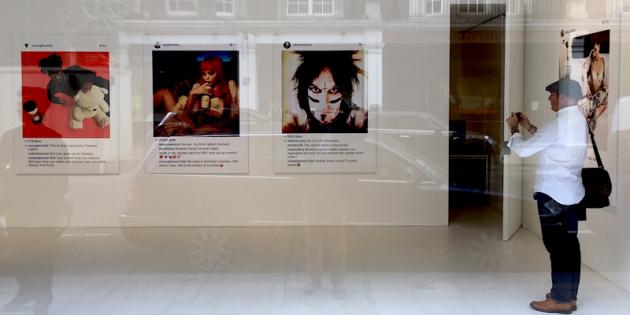Donald Graham a professional photographer has sued the Gagosian Gallery, Larry Gagosian, and the artist Richard Prince. The case brought as a federal complaint was lodged on New Years eve.
The case relates to the unauthorised use of one of Mr Grham’s images which depicts a Rastafarian Smoking a Joint. It appeared in the 2014 show “New Portraits”. The image was exhibited in a recent show of Instagram posts which used appropriated imagery which was then modified with original text created by the artist. Prince’s added text read, “Canal Zinian da lam jam.”
Sergio Munoz Sarmiento, Graham’s attorney, sent cease and desist letter, which requested that the image be removed from the show. Gagosian and Prince were sighted in the letter. Prince retorted that the image was, “as it appeared from a third person who posted it on Instagram”, under the account of @rastajay92.
Donald Graham went on Instagram stating: “Appropriated Exhibit. The only way you’d know my work was a part of this display is…well, that’s just it, you wouldn’t know. #PrinceofAppropriation.” Along with his post he added his Rastafarian image saying; “How to credit a work: ‘Rastafarian Smoking a Joint’ ©1997 Donald Graham. #PrinceofAppropriation.”
Artlyst’s Paul Black stated during the run of Prince’s Instagram show in London; “ This particular practice of ‘image theft’ has been the mainstay of Prince’s practice for many decades. In fact, the artist invented his own conceptual process with the creation of ‘Re- photography’; where Prince would appropriate existing images – often sourced from advertising – and would re-contextualise them by Re-photographing the initial image – a photo of a photo – then subtly re-cropping the work: a practice that would shift the perspective of not only the viewer.” He added; It would seem that this particular act has also shifted the perspective of the courts; in fact there is no way of knowing whether or not the artist is guilty of copyright infringement, despite the fact that the artist has not received permission to use most of the photographs. But the simple fact that Prince has altered the images might help the work meet the requirements of fair use, which – according to the courts – is a suitable defence against the charge of copyright infringement.

